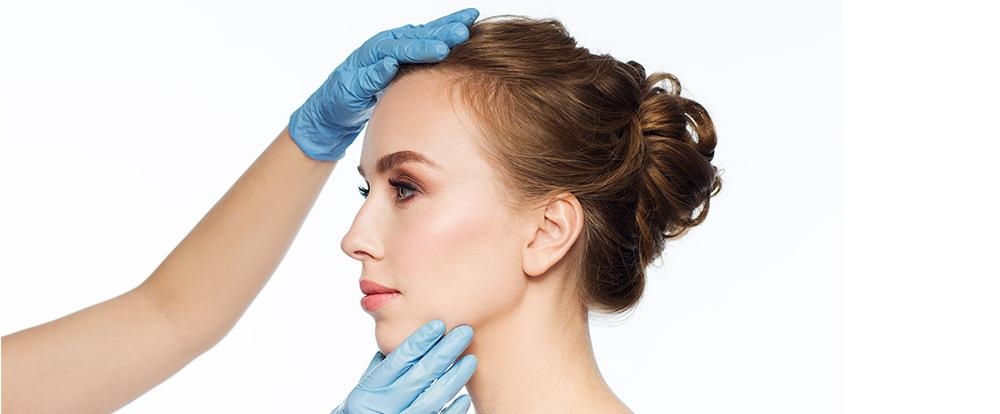Rhinoplasty

Overview
Rhinoplasty is a surgery that is performed to change the shape of the nose and improve its function. Rhinoplasty is performed to correct deformities of the nose caused by trauma or congenital disabilities, such as difficulty breathing due to medical reasons. Besides, you may want to change the appearance of your nose due to cosmetic reasons.
The nose is an organ that has a significant place in facial appearance. For this reason, if the nose's appearance is changed, your plastic surgeon will make a unique plan for you, considering the other physical properties of your face. If you want to undergo rhinoplasty, please consult our plastic surgeons for techniques, expectations, and potential risks.
Why is the rhinoplasty procedure done?
Only your request to change your nose's shape can indicate rhinoplasty. On the other hand, a wide variety of nasal deformities can be found, either alone or together, such as saddle nose, deviation in the nasal septum (deviation), and collapse of the nasal wings. All such appearance disorders aim to achieve a well-balanced facial appearance.
In addition, nasal breathing may be difficult due to trauma or congenital disabilities. The aim is to restore airflow by eliminating and correcting abnormalities of bony and cartilaginous structures that form the nasal cavity. Thus, both structural problems are eliminated, and normal breathing functions are restored. Accordingly, rhinoplasty can be performed for structural, functional, and cosmetic reasons (s). It would help if you discussed the aim of rhinoplasty with our plastic surgeon in order to get the most realistic and satisfactory outcomes.
Risks
The potential risks of rhinoplasty are listed below. Although all possible measures that modern medicine allows are taken to prevent the occurrence of risks, it is by no means possible to warrant that the risks will be eliminated.
• Nosebleed
• Infection
• Accumulation of blood (hematoma)
• Fluid accumulation in the incision area (seroma)
• Changes of sensation in and around the nose
• Inability to get desired result
• Injury or perforation of the wall that divides the nasal cavity into two (septum)
• Shortness of breath
• Persistent pain and bruising
• Anesthesia-related complications
Our expert surgery team will employ all practices to minimize the risk of complications, and our plastic surgeons will preoperatively inform you about the risks listed above and all other potential complications and will address all your concerns
Preparation
The first phase of preoperative preparation is the same in all Medicana Hospitals. After you decide to have rhinoplasty and discuss it with our plastic surgeons, the following examinations are performed to determine if you can undergo this surgery:
• Review of health history
• A detailed physical examination
• Necessary laboratory tests and radiology studies
• Assessment by anesthesiologist and other laboratory tests and radiology studies to minimize anesthesia-related complications
When you visit our plastic surgeons to discuss the treatment options for your nose, the shape and size of your nose and other facial characteristics are first evaluated. After this assessment, your doctor will talk to you about your treatment plan and your cosmetic expectations.
There are various techniques for reshaping the nose. After you decide to proceed, your surgeon will explain recommendations and treatment options in all aspects.
After it is verified that the surgery does not pose a risk, you will be asked to quit smoking if you are a smoker and to stop taking certain medications that increase the risk of bleeding. All other prescribed and over-the-counter medications, herbal products, and supplements will also be questioned, and you will be informed to continue or stop taking them.
You will also be instructed to stop eating and drinking at a particular time before the surgery. You should strictly follow this instruction to undergo the surgery as scheduled.
Moreover, it is reasonable to plan discharge, post-discharge accommodation, and travel at this phase to manage the postoperative period better.
Surgery and early postoperative period
Rhinoplasty can be performed under general anesthesia or a combination of local anesthesia and sedation.
As rhinoplasty requires completely personalized planning, all surgery steps may vary for each patient.
Since improving appearance is one of the basic principles for rhinoplasty, the inner surface of the nose is preferred to make the incision to visualize the nasal bone and cartilage in rhinoplasty.
Depending on your nasal problems, the bone or the cartilage can be removed, grafts obtained from other body parts or synthetic materials can be used to improve the appearance, and the deviated septum can be corrected.
After the desired result is achieved, a splint is placed on the skin's outer surface to prevent the nose's new shape and function. Moreover, wound dressings will be placed in your nostrils. You may feel pain and recognize swelling in your nose after the surgery. Or, you may even notice bruising on the skin of the nose. These are expected symptoms that will spontaneously disappear within several weeks. You will need to elevate your head to minimize the risk of bleeding and swelling.
The scar tissue that forms along the incision line will fade over time, but its color will never be identical to your skin tone.
Although you will feel minimal pain, your plastic surgeon will prescribe painkiller pills to manage the pain. If your plastic surgeon used non-absorbable stitches, your doctor will instruct you when they will be removed (usually the first postoperative follow-up visit). Wound dressing materials in your nose and the splint will be removed during the same visit. After you recover from anesthesia and are ready to walk, you will be mobilized by or under the supervision of our healthcare professionals.
Before you are discharged, your plastic surgeon or another healthcare professional will inform you about the time interval you should rest and when you can start non-strenuous exercises. Although routine daily life activities are allowed, your doctor will instruct you to avoid strenuous work for a particular time. It would help if you avoided nasal trauma and facial expressions that stretch the incision; you should not blow your nose and be careful while dressing and undressing.
It is essential to follow those instructions to facilitate recovery and get the best outcome from the surgery. Therefore, please ask your plastic surgeon all your questions before you leave the hospital.
It is essential to follow those instructions to facilitate recovery and get the best outcome from the surgery. Therefore, please ask your plastic surgeon all your questions before you leave the hospital.
It would help if you visited your plastic surgeon for scheduled follow-up visits before you are discharged. If you experience warmth and redness in your incision line or nose, or if you have a fever or any symptoms that you think are due to surgery after you are discharged, contact your plastic surgeon immediately.
Results
It takes some time to obtain all the final results of the rhinoplasty. Sometimes, it may take up to one year for all surgically corrected tissues to heal and take the final shape.
Rhinoplasty is a highly personalized cosmetic surgery, and you may request, or your doctor may recommend, some minor revisions after all final results are obtained. Therefore, it is reasonable to wait for one year before definitive evaluation of results. Suppose you inform your plastic surgeon about your expectations before undergoing a breast augmentation. In that case, your satisfaction with outcomes will be maximized, and the risk of implant removal or revision surgery will be minimized.




























